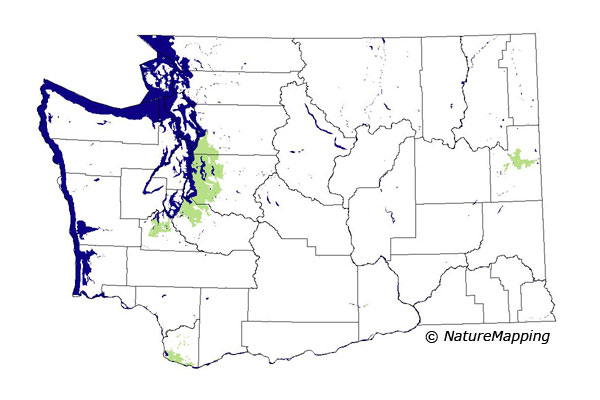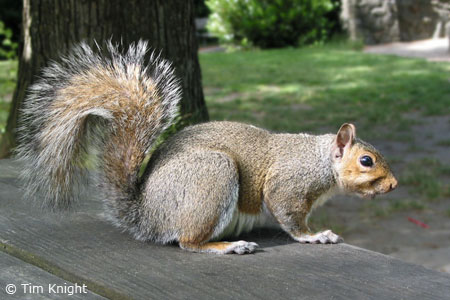


Eastern Gray Squirrel (Sciurus carolinensis) Description: The Eastern Gray Squirrel as a bushy tail bordered with white hairs. Its body is gray on top and white underneath in the winter and a tallish color in the summer. Its tail is used for balance when dashing between tree branches. Their round foreprints are 1 inch long, while their triangular hind prints are 2 and 1/4 inches long. 
Length: Can grow up to 20 inches long. Weight: Can weigh between 3/4 and 1 and 1/2 pounds. Range / Habitat: They are abundant in city parks, suburbs, and rural woodlands where there are plenty of nut trees. They can be found mostly in Seattle, Washington and Vancouver, British Columbia. Nesting: It makes a nest of twigs in the branches of trees and lines it with grass or bark. 
Signs that they have been or are present: One can find gnawed acorn husks or other nutshells littering the ground. In the winter, holes in the snow are visible and in the spring, holes in the earth are visible. This is where they have dug for their stored nuts. Also, they gnaw on tree trunks and limbs with their small teeth. Diet: Nuts, acorns, and seeds they steal that people put out to feed the birds. Mating Habits: They mate in the late winter months. Litter Size: Their first litter has 2 to 3 young that are born in the spring. Their second litter is born in late summer. Gestation periods last about 44 days. Did you know?
Animal silhouettes available to purchase » Home | About Us | How to Participate | Biodiversity Modules | Projects | Maps | News | Resources |